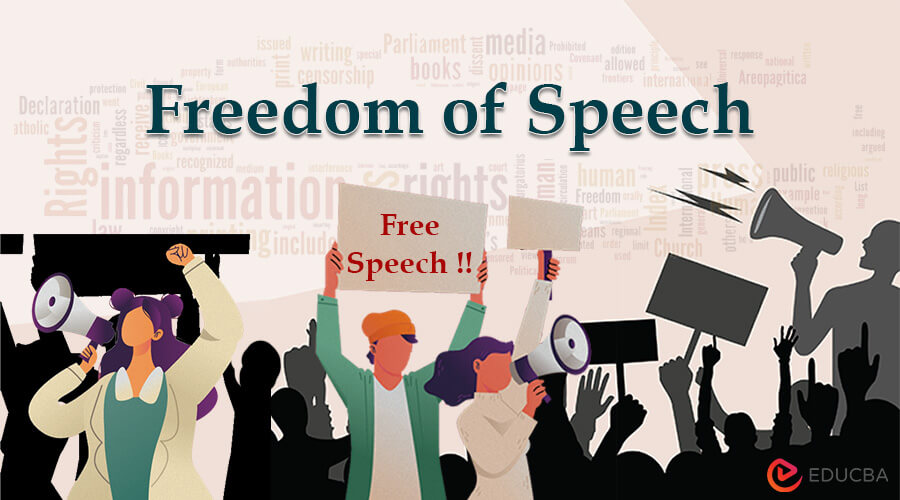View News
The-Evolving-Landscape-of-Free-Speech-in-the-Digital-Age-A-Contemporary-Perspective

The Evolving Landscape of Free Speech in the Digital Age: A Contemporary Perspective
~Sura Anjana Srimayi
INTRODUCTION
Free speech is a cornerstone of democratic societies, enshrined in legal frameworks worldwide to protect individuals' rights to express their thoughts without fear of censorship or reprisal. However, the digital age has introduced complexities that challenge the traditional understanding of this fundamental right. Online platforms, social media, and digital communication channels have redefined the scope and impact of free speech, necessitating a nuanced and adaptive legal and regulatory approach. This paper explores the evolving dimensions of free speech in the digital era, analyzing the intersection of online discourse, platform moderation, economic ramifications, and legal challenges, with reference to landmark case laws.
FREE SPEECH IN THE DIGITAL AGE
1. The Transformation of Free Speech Online
Historically, free speech has been framed as the right to express opinions without government interference, as established in legal doctrines such as the First Amendment of the U.S. Constitution and Article 19(1)(a) of the Indian Constitution. With the advent of the internet, the scale and reach of speech have expanded exponentially, enabling individuals to voice their opinions globally.
However, this transformation has come with new challenges, particularly concerning misinformation, hate speech, and the amplification of extremist content. While the internet fosters inclusivity and democratization of information, it also provides a breeding ground for harmful content that can incite violence, spread disinformation, and undermine public trust in institutions.
2. Content Moderation and Censorship Dilemmas
A critical debate in the digital free speech landscape revolves around content moderation. Private technology companies such as Meta, X (formerly Twitter), and Google hold significant control over online speech, often acting as de facto arbiters of what is permissible.
The tension between platform autonomy and user rights was highlighted in Packingham v. North Carolina (2017), where the U.S. Supreme Court ruled that social media is a "modern public square," making undue restrictions on access unconstitutional. Similarly, in Shreya Singhal v. Union of India (2015), the Supreme Court of India struck down Section 66A of the Information Technology Act, which criminalized "offensive" online speech, citing its vague and broad provisions as a violation of free expression.
However, unregulated platforms can also become conduits for harmful speech. The controversy surrounding Facebook’s role in Myanmar—where misinformation and hate speech fueled violence against the Rohingya minority—illustrates the challenges of content governance.
3. The Economic Implications of Free Speech
The business models of social media platforms are inherently tied to user engagement. Algorithmic content curation, designed to maximize user interaction, often creates "filter bubbles" and "echo chambers," reinforcing existing biases and limiting exposure to diverse viewpoints. Studies have shown that divisive and sensational content tends to generate higher engagement, leading platforms to prioritize such content, sometimes at the expense of factual accuracy and social harmony.
For instance, in NetChoice, LLC v. Paxton (2022), the U.S. Fifth Circuit Court upheld a Texas law restricting social media platforms from censoring content based on viewpoint discrimination, arguing that platforms are not merely private actors but play a role akin to public utilities. Conversely, the Eleventh Circuit struck down a similar law in Florida, creating a legal conflict regarding platforms' role in moderating content.
4. Privacy Concerns and Data Exploitation
The aggregation and commercialization of user data present another challenge to free speech. While data-driven personalization enhances user experience, it also raises serious privacy concerns. The General Data Protection Regulation (GDPR) in the European Union and India’s Digital Personal Data Protection Act (2023) attempt to regulate data collection and processing, aiming to strike a balance between free speech, data security, and economic interests.
A landmark case, Carpenter v. United States (2018), established that collecting location data from mobile devices without a warrant violates privacy rights, setting a precedent for data protection in the digital age.
LEGAL FRAMEWORKS AND FUTURE CONSIDERATIONS
The legal landscape for regulating free speech online remains dynamic. While traditional free speech principles remain relevant, newer laws are needed to address emerging challenges posed by digital platforms.
-
Balancing Regulation and Innovation – Governments must ensure that regulatory measures do not stifle innovation or create barriers to free expression.
-
Harmonizing Global Standards – Cross-border digital speech necessitates international cooperation in defining regulations, as seen in the EU Digital Services Act (DSA), which aims to create standardized content moderation rules.
-
Judicial Oversight and Transparency – Courts should play a proactive role in scrutinizing content moderation decisions, ensuring that platforms do not suppress legitimate speech arbitrarily.
CONCLUSION
The digital revolution has redefined free speech, offering unprecedented opportunities for expression while introducing new challenges such as misinformation, censorship concerns, and data privacy risks. To navigate this evolving landscape, a collaborative effort among policymakers, tech companies, legal experts, and civil society is required to establish frameworks that uphold free speech while mitigating its potential harms.
A well-calibrated legal and regulatory approach, informed by landmark case laws and technological advancements, will be crucial in ensuring that digital platforms remain spaces for meaningful dialogue, innovation, and democratic participation without compromising fundamental rights.
"Unlock the Potential of Legal Expertise with LegalMantra.net - Your Trusted Legal Consultancy Partner”
Disclaimer: Every effort has been made to avoid errors or omissions in this material in spite of this, errors may creep in. Any mistake, error or discrepancy noted may be brought to our notice which shall be taken care of in the next edition In no event the author shall be liable for any direct indirect, special or incidental damage resulting from or arising out of or in connection with the use of this information Many sources have been considered including Newspapers, Journals, Bare Acts, Case Materials , Charted Secretary, Research Papers etc.

